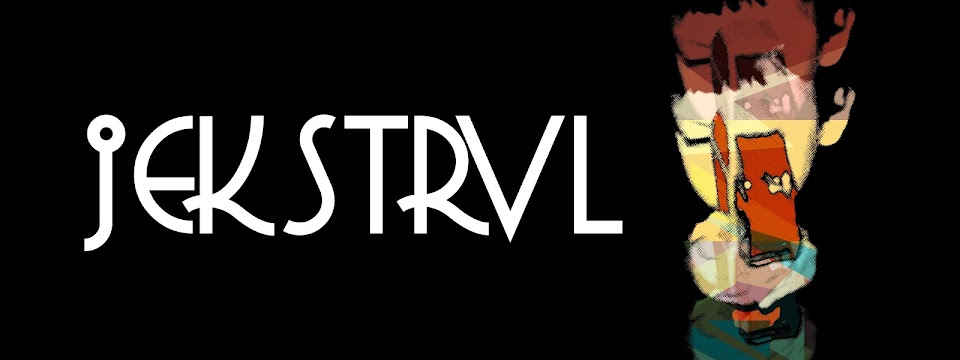Rice's vampires are not afraid of crosses. They also have glass-looking fingernails. They don't turn into bats or any kind of form or animals like Dracula.
Rice, in order to preserve the legendary characters, has maintained some characteristics, too. Her vampires sleep on coffin which is must for it is the safest way where sunlight can't get to them. With that, they stay away from sunlight for it burn and kill them. Their main source of food is still blood (either human or animals), but they can live forever without it, only that their strength gets affected. They move fast. They hear well from a distance.
 Stephanie Meyer also demythologized vampires in her series of "Twilight" books. Her vampires can easily mingle and interact with humans since they have no problem coming out during the day. They shouldn't be exposed to direct sunlight though for their skin shines like crystal. They don't sleep, so there's no need for coffin. They work and go to school, living like ordinary human does. Each of them can have different abilities like mind reading, clairvoyance, etc. They can fly like bats (but not really turning into bats) and walk through trees (and I suppose through walls, as well) like spiders. They only have blood for food (that of human's or animal's). They move very fast and has super strength.
Stephanie Meyer also demythologized vampires in her series of "Twilight" books. Her vampires can easily mingle and interact with humans since they have no problem coming out during the day. They shouldn't be exposed to direct sunlight though for their skin shines like crystal. They don't sleep, so there's no need for coffin. They work and go to school, living like ordinary human does. Each of them can have different abilities like mind reading, clairvoyance, etc. They can fly like bats (but not really turning into bats) and walk through trees (and I suppose through walls, as well) like spiders. They only have blood for food (that of human's or animal's). They move very fast and has super strength. The danger in demythologizing characters is that one may take away the characteristics that are unique with certain creatures. If that happens, these creatures tend to be less interesting and exciting. Unfortunately, that happens in Meyer's vampires. Take away what's exclusive to vampires, you'll get almost human-like creatures. It may have worked in books (although I can't say really since I haven't read any of the series) but it doesn't in movies.
Twilight gives us dull vampires. Except for their pale skin and almost robot-like movements, they look like humans. Nothing to get interested about since they don't really stand-out in crowds with their good looks and dashing appearances. The sun is no threat to them so they can go wherever and whenever they want. Their crystal-like skin when sun shines on it is not really a source of problem. It only makes them look different. But in today's science, they could pass it off as skin disease or abnormality. They do what humans do except the drinking of blood. So if they are almost human-like characters, what should we get piqued about?
Twilight is a story about Bella (human) and Edward (vampire) who has fallen in love with each other. Aside from the constant thirst for blood Edward has for Bella - which was the reason why he becomes interested with her in the first place, there's not much of a threat in their relationship. Sure, there'd be the usual them-against-society type of situation, but it's nothing new. Bella could've chosen to be one of them, only that Edward disagrees. So if the relationship continues without a glitch, Bella grows old (and dies eventually) and Edward remains 17.
There isn't much chemistry between the two leads. For one thing, Bella looks like one of the vampires since her skin is as pale as theirs. It feels like there's not much blood running through her veins. (Was it just the cold weather there or really a bad make-up?) Second, with Bella, where her attraction for Edward is coming from is not clear. Her constant questions of whys is annoying (Why did you save me? Why did you do that? Why are you following me?), when she should just be thankful for Edward has saved her life several times. The questions seemed contrived and would just want the viewers to be led to the answer that Edward is indeed a vampire. There are other possible ways that could lead with such an event - the discovery of Edward's true nature. Sad to say, it has gotten the easy route.
In the movie, there is a story about wolves and vampires being in opposite poles. Of course, there are humans being killed by (other group of) vampires, and humans are at a hunt for these killers, believing they were done by animals. One would think that the threat of the lover's relationship might come in any of them but it didn't. The threat comes from the other vampire clan who wants Bella's blood. That threat was not planted well. It was one of the moments in the film that will leave you dumbfounded. So even if the threat was there, you really can't seem to care for Bella or Edward. The thrills and excitement are not enough to keep one glued and interested.
Twilight is basically a teen flick. As with most teen flicks, it is nothing to rave about. It's all hype and comes out short of expectation. It could be the film of this generation but it could remain such until the sequel comes up with a truly blood-thirsty movie!

No comments:
Post a Comment